The Basilica
BASILICA
of SAN LORENZO
in LUCINA
MASS CELEBRATION TIMES
FROM 15 JUNE 2025
Holy Masses on weekdays: 11:00 am and 6:30 pm
Holy Masses on holidays: 10:30 am-12:00 pm and 6:30 pm
WELCOME
Dear reader,
I’m your guide, and a long time ago I used to live right beneath the Basilica of San Lorenzo in Lucina, which apparently took its name from me, a rich matron called Lucina.
I’m said to have founded in my house a domestic ecclesia, i.e. a place of religious worship which was in a private house rather than a public basilica.
I was deeply religious and used to visit the Christian prisoners and pay for the burial of the martyrs, who included none other than St. Sebastian. Just think, in my house in 308 A.D. I hid Pope Marcellus to save him from the persecutions ordered by Maxentius.
In this way my house became the first nucleus of the church which was consecrated as a basilica in 440 A.D. by Pope Sixtus III, and dedicated to St. Lawrence the martyr (San Lorenzo in Italian), who died in 258 A.D. during the persecution of the emperor Valerian.
The Basilica of San Lorenzo in Lucina stands in the area of the large monuments which were built to celebrate the emperor Augustus, a flood zone originally called Campus Martius, because in this vast area there was in fact an altar consecrated to the God of War. Large events such as theatrical spectacles, military and sports drills, and triumphal celebrations were held here.
It was the emperor Augustus with his close friend Marcus Vispanius Agrippa who began the urban development of the Campus Martius, which was then continued by Domitian and completed by Hadrian. Some of the buildings included in the huge development plan were: the Pantheon, later rebuilt by Hadrian in the forms and dimensions we see today; the Mausoleum of Augustus, destined to receive the emperor’s ashes and those of his relatives and intimate friends; and the Ara Pacis, built in 9 B.C. to celebrate the emperor’s family and achievements.
So the Basilica of San Lorenzo in Lucina has very old origins and has undergone many transformations over the centuries.
[The matron Lucina]
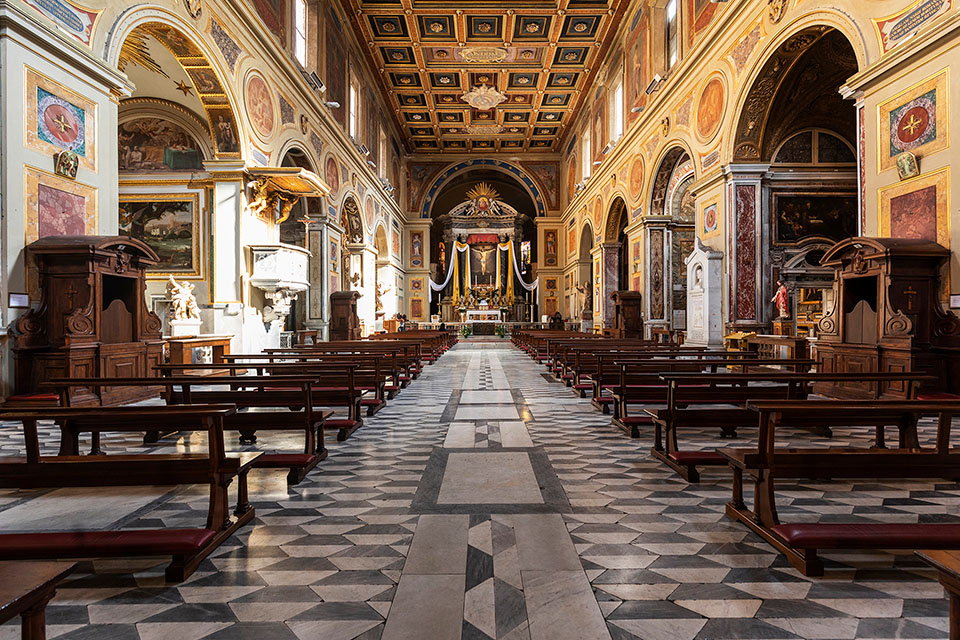
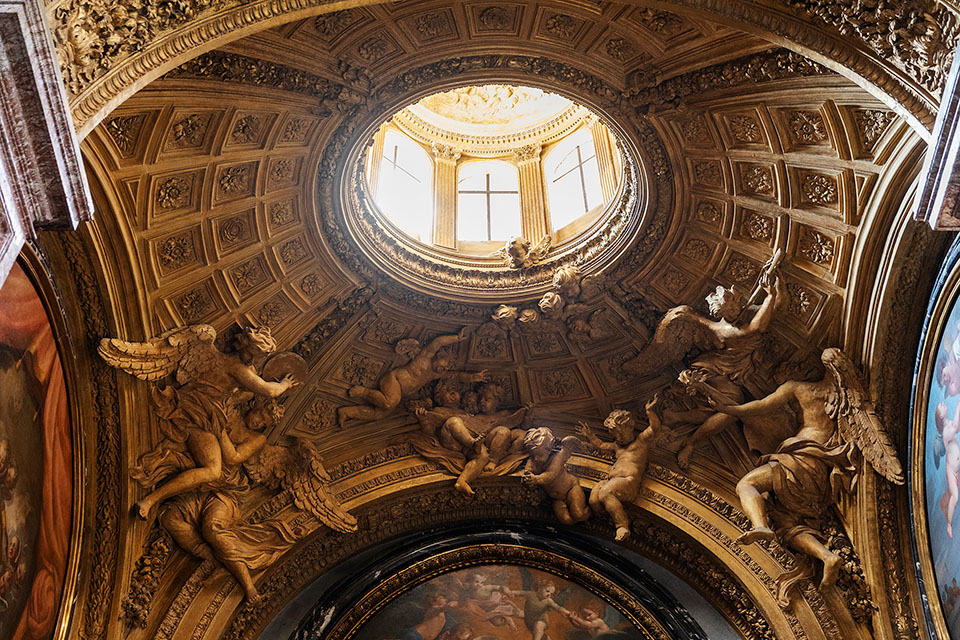
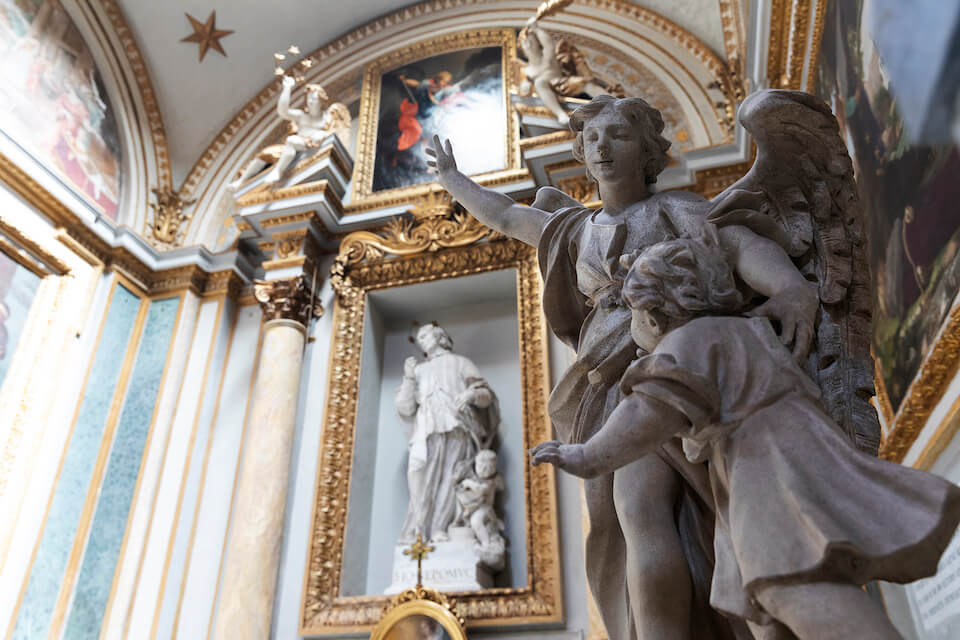
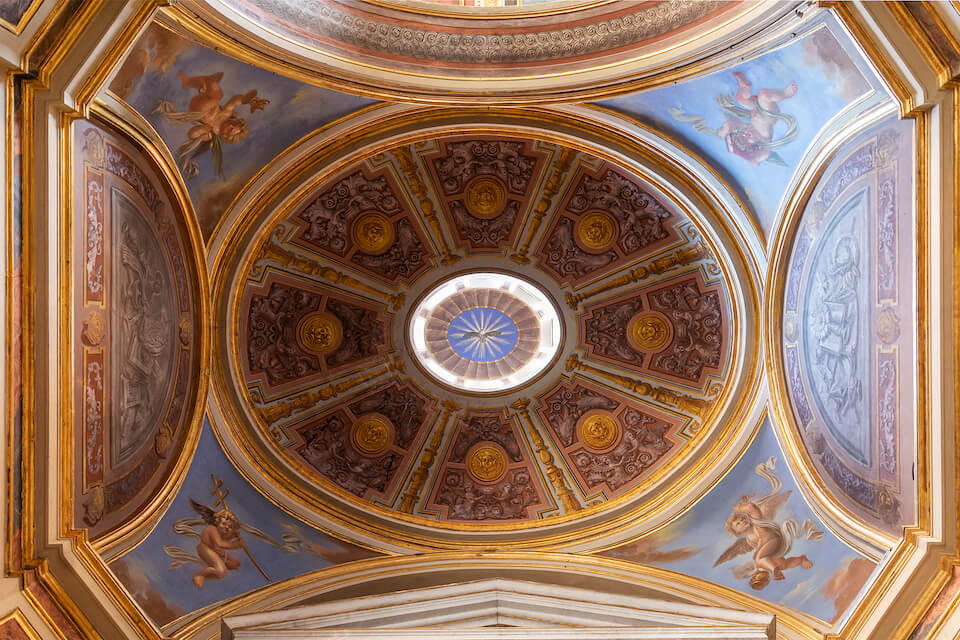
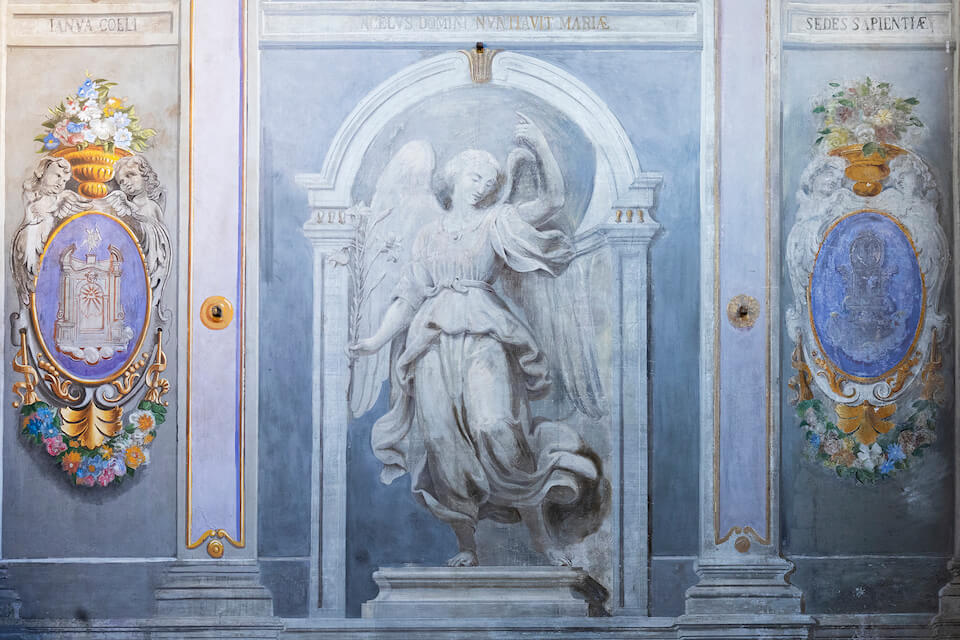
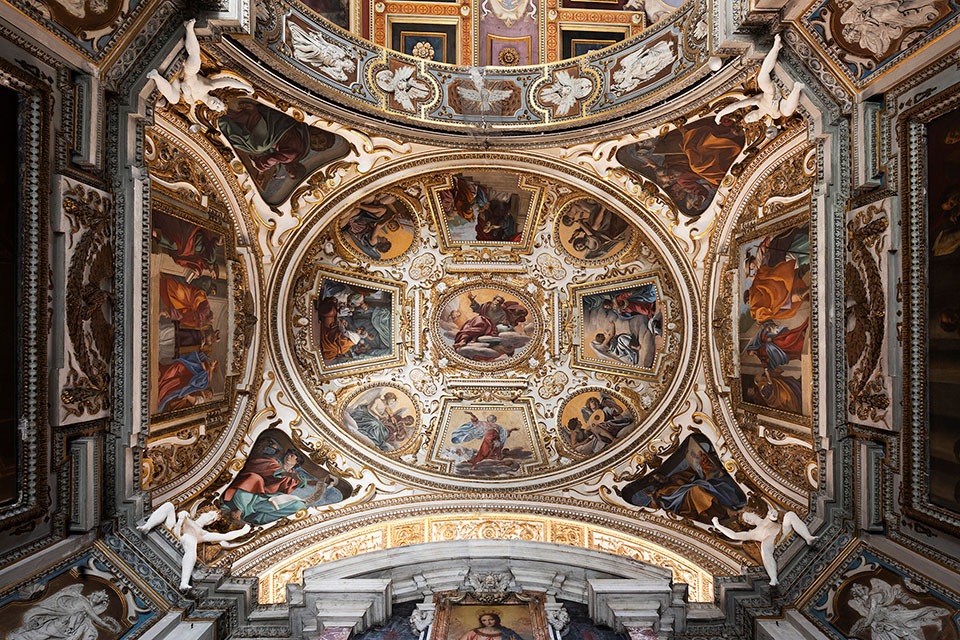
TOURIST PILGRIM
Dear friend, you have been brought here because you wished to live the experience of “learning Rome”. Like the great 19th-century travellers, you’ve prepared yourself to visit the Eternal City. A past of civil, moral, spiritual grandeur which opens up and opens you up to the future of the world. Looking at the past in order to build the future: a just, free, peaceful society, humanity’s true home. So you’ve decided to look at what human beings think of themselves over and beyond time, undertaking a journey into beauty, harmony, art; and you’re here to “learn Rome”. And San Lorenzo opens up for you the beauties of the Basilica, it offers you the visit to the excavations and to the small museum of vestments and furnishings, a continuous itinerary of enjoyment, rigorously thought out and planned also taking into account contemporary artistic and cultural criteria: an authentic Roman religious “journey”. Today you’re joining the millions of visitors who come each year to the Eternal City. Some of them have no idea that it’s imbued with the Christian faith. Some aren’t Christians, many of them don’t belong to any religious faith at all. They’re tourists. Tourists with thousands of different faces, often inattentive to what’s happening, letting themselves be carried along by the flow of other people and things. They enter to visit a monument of ancient Rome, a monument of the past which has hardly any meaning for the present, and if anything only a cultural one, historical knowledge of what has been and is no longer. But this place still has its life, it speaks to the present and has a future. It is still a place of prayer and spiritual searching, of questions and answers, it is still a holy place, a Christian basilica. Thus a simple visit to one of the many place of history may develop into a surprisingly meaningful encounter which changes a person’s life. And a simple visitor, an inattentive tourist, may suddenly discover themselves a pilgrim. San Lorenzo wants you as a pilgrim, not as a visitor. A pilgrim of the spirit, the protagonist of a journey which leads you finally to find out who you are and what you love, what you hope and desire, what you refuse to lose forever: your wish for justice and truth, a world of peace and safety, a story of freedom and happiness. So you must raise your eyes. You must not only see, but observe. Stones, Statues, coloured marbles, famous paintings…..become a pilgrim of yourself, search for and find yourself! Let yourself be sought and found! This place is just your fellow traveller and the opportunity for a special journey. Mons. Daniele Micheletti, parish priest of San Lorenzo in Lucina
